Jane Austen and Great Bookham
by Tony Grant
Cassandra Leigh was born on September 26th 1739 at Harpsden in Oxfordshire. She was the third of four children born to Thomas Leigh and Jane Walker. She had an older brother James and an older sister Jane and a younger brother Thomas. Her father’s brother, Theophilus Leigh, master of Baliol College Oxford, had a number of children also, including two daughters named Mary and Cassandra. This meant there were two Cassandra Leighs in the family. On April 26, 1764 George Austen, Proctor of St John’s College Oxford, and Thomas Leigh’s daughter Cassandra were married at St. Swithin’s Church in Bath, and just after that he became the Vicar of Steventon in Hampshire near Basingstoke. Theophilus Leigh’s daughter Cassandra married Samuel Cooke in June 1768. On the 13 April 1769, Samuel Cooke became the vicar of St Nicholas Church, Great Bookham, in Surrey.
George and Cassandra Austen had eight children, James, George, Edward, Henry, Cassandra, Francis, Jane and Charles. Jane was born 16 December 1775 at Steventon. She was to become the world renowned author Jane Austen.
Samuel and Cassandra Cooke had six children but only three survived: Theophilus Leigh Cooke, George Leigh Cooke and Mary Cooke. Anne and their other children with the same names as those who lived, Mary and Theophilus, all died in infancy and their burials are recorded in the St Nicholas parish register.
Throughout Jane Austen’s letters there are numerous references to aunts, uncles and cousins. She had an extensive family. There were the Leighs of Adelstrop, the Leighs of Stoneleigh Abbey, the Brydges, the Turners, as well as the Cookes of Great Bookham in Surrey. Jane, her sister Cassandra, her brothers and her mother corresponded and visited all of them at different times. Jane Austen spent a lot of time travelling. She was a great walker, whether it was along the lanes around Steventon, walking up onto the hills around Bath, walking from Chawton to Alton or to Farringdon. She took carriages and coaches to London and Bath, as well as many other places, stopping at inns and hostelries or family along the way. Great Bookham, where the Cookes lived, was about fifty miles from Chawton on route to London. Carriages travelled at an average speed of no more than eight miles an hour at best. To get to Great Bookham took Jane Austen and her family about five hours from either Steventon or Chawton. The countryside was beautiful, especially in summer when birds and wild life and wild flowers were seen in abundance. It occurs to me that Jane Austen could have been a great travel writer and observer of nature. Maybe she was a close observer of the natural world but she didn’t record it. Human interaction was her thing.
Great Bookham is situated in Surrey a few miles from where I live. The area around Great Bookham inspired Jane Austen’s novels to quite an extent. It must have been while staying with her Aunt and Uncle and cousins Mary, George and Theophilus that she first visited Box Hill which is only a few miles away from where the Cookes lived . She probably used Great Bookham itself as well as Leatherhead and other villages and small towns nearby as sources to create Highbury, the fictitious town in her novel Emma. West Humble, a small settlement near the base of Box Hill, is reputed to be the small village outside of Dorking where the impoverished Watson family lives in Jane’s unfinished novel The Watsons. Of course Dorking itself, the setting for the Ball in The Watsons, is nearby too.
Jane’s Aunt, Mrs Cooke, was an aspiring writer herself. She wrote a novel called, Battleridge. In a letter to her sister Cassandra, Jane writes:
[Sat 27-Sun 28 Oct 1798]
Your letter was chaperoned here by one from Mrs Cooke, in which she says that ‘Battleridge’ is not to come out before January; & she is so little satisfied with Cawthorn’s dilatoriness that she never means to employ him again.
Jane, and perhaps the rest of the Austens, did not always enjoy the prospect of travelling to Great Bookham to visit their cousins:
[Tue 8 Wed 9 Jan 1799]
I assure you I dread the idea of going to Bookham as much as you do; but I am not without hopes that something may happen to prevent it; Theo has lost his Election at Baliol, & perhaps they may not be able to see company for some time. They talk of going to Bath in the Spring, & perhaps they may be overturned in their way down, & all laid up for the Summer.
Jane actually spent quite a lot of time with her relations at Bookham, up to a week or at times for longer stretches. Reading her references to the Cookes suggests that her aunt and uncle could be at times pompous and overbearing and perhaps liked to present a perfect view of life rather than a realistic one.
[Tues 10th– Wed 11th January 1809]
…Easter Monday, April 3rd is the day we are to sleep that night at Alton, & be with our friends at Bookham the next, if they are then at home;- there we remain till the following Monday, & on Tuesday 11th hope to be at Godmersham. If the Cookes are absent, we shall finish our journey on ye 5th-These plans depend of course on the weather, but I hope there will be settled cold to delay us materially.
If Jane isn’t corresponding with her aunt and uncle she is writing to and receiving letters from her cousins. She does appear to get on well with her cousin Mary.
[Mon 30th Jan 1809]
“…I had this pleasant news in a letter from Bookham last Thursday, but as the letter was from Mary instead of her mother you will guess her account was not equally good from home – Mrs Cooke has been confined to her bed some days by illness, but was then better& Mary wrote in confidence of her continuing to mend. I have desired to hear again soon.”
This extract does suggest that she gets the truth from Mary, and is suggestive of their warm relationship.
*************
After his marriage to Cassandra Leigh, Samuel Cooke brought his new wife to Great Bookham and was installed as vicar on the 13 April 1769. At first they lived in the rectory, situated across the road from the entrance to the grounds of St Nicholas Church in Church Road. This is now the post office:
They later moved to a new, larger rectory set back from the road, built on a plot next to and immediately north of theoriginal rectory. This was the rectory that Jane Austen would have visited and stayed at. It no longer exists (see painting above). On its site there are a row of shops:
From old photographs of the rectory we can make comparisons with another building just south of the post office. The sash windows in the still existing building are exactly the same design as those of the demolished rectory. The chimney stack is very similar and the front door and portico look like a miniature version of the rectory entrance -the pillars and canopy of look as though they are of identical design and pattern. (It is interesting to note that a maid servant who would have served Jane while she stayed with her cousins was named Elizabeth Bennet!)
****
Before marrying Cassandra Leigh and becoming vicar of Great Bookham, Samuel was first educated at Blundell’s School in Devonshire and became Blundell’s Scholar at Balliol College Oxford. He graduated with a Bachelor of Arts degree in 1762 and gained his Master’s degree in 1764. From 1762 he was a Blundell Fellow at Balliol and became rector of Cottisford, Oxford. However, after settling in Great Bookham with Cassandra and producing a number of children he lived in Bookham for the rest of his life. He is, however, buried in Beckley in Oxford where his wife inherited a house through the Leigh family. He may have died while visiting Beckley.
There is another connection between Great Bookham and Jane Austen’s literary career. A writer who influenced Jane Austen was Frances Burney (Madame D’Arbley). She wrote two novels that we know Jane Austen read, Evelina and Cecelia, Jane a subscriber to the latter. At the time Jane was visiting her relations in Bookham and staying in Church Road to the west of St Nicholas Church. Burney and her husband, General Alexander D’Arbley, who fled to England after the rise to power in France of Maximillian Robespierre, were living in Fairfield Cottage, now named The Hermitage, a small cottage that still exists in Lower Road to the south of the church. Burney was introduced to the French emigres and D’Arbley by her sister Mrs Phillips – they met at Juniper Hall near Mickleham next to Box Hill. Jane Austen and Frances Burney must have been in close proximity on many occasions. Burney’s son Alexander was baptised in St Nicholas Church on April 11, 1795, by the Reverend Samuel Cooke. Burney herself mentions Mrs Cooke in a letter to her father:
[Bookham, June 15, 1795]
Mrs. Cooke, my excellent neighbour, came in Just now to read me a paragraph of a letter from Mrs. Leigh, of Oxfordshire, her sister. . . . After much of civility about the new work and its author, it finishes thus:—“Mr. Hastings I saw just now: I told him what was going forward; he gave a great jump, and exclaimed, ‘Well, then, now I can serve her, thank Heaven, and I will! I will write to Anderson to engage Scotland, and I will attack the East Indies myself!’” F. D’A.
Burney also mentions the Reverend Samuel Cooke in another letter to her father:
“ Mr Cooke tells me he longs for nothing so much as a conversation with you on the subject of Parish Psalm singing-he complains that the Methodists run away with the regular congregation from their superiority in vocal devotion.”
Claire Tomlin in her autobiography Jane Austen : A Life explains that Jane read Burney’s novels:.
“Cecilia…..Nearly a thousand pages long. It too must have filled many winter evenings by the fire at Steventon, and taken its toll on Jane’s eyes, which at times became tired and troublesome. She admired Burney’s comic monsters and her dialogue, but most what she learnt from her was negative; to be short, to sharpen, to vary, to exclude. Also, to prefer the imperfect and human heroine to the nearly flawless one. What Burney had demonstrated with her first book- concise as none of the later ones were- was that there was a public for social comedy finely observed through female eyes.”
While living in Fairfield Cottage in 1794, Burney began writing Camilla and finished a tragedy called Edwy and Elgiva. Sheridan presented this at Drury Lane with Mrs Siddons and Kemble. The play was a disaster, Burney putting it down to the cast being under rehearsed. Also while living in Bookham, Burney gave birth to a son on December 18, 1794 – he was baptized Alexander at St Nicholas Church by the Reverend Cooke. Many important French emigres attended the baptisim, all friends of General D’Arbley. The D’Arblays obviously knew the Cookes well, and it seems inconceivable that Jane Austen never met Burney – yet there is no evidence that she did.
I have discovered a few more things about Frances Burney, not related to Jane Austen but of interest to me, that give me the impetus to explore her world more. Burney’s father was a well-regarded composer and musician. He was a friend to Mrs Thrale, a great society hostess in the 18th century. Mrs Thrale lived at Streatham Park in a grand house where she entertained Dr Johnson, a close friend of her husband Mr Thrale. She encouraged and nurtured Frances Burney and many other famous people of the time such as James Boswell and the great artist Joshua Reynolds. Streatham Park, now a Victorian housing estate, is a mile from where I live. Chessington Hall, just south of me is where another friend of Burney’s father’s lived and where Frances often visited. It is said she began writing Cecelia while staying at Chessington. Yes, I have much to explore.
Also living in the area of Great Bookham at the time Jane visited, and close associates of Frances Burney, were Richard Brinsley Sheridan – living at the great house of Polesdon Lacey on the edge of Bookham – and Madamoiselle Anne Louise Germaine de Stael. She was a novelist too. Jane liked her Corinne ou L’Italie. De Stael owned Juniper Hall where French emigres including General D’Arbley were given shelter. We know that De Stael read Jane’s novels but pronounced them “vulgaire.” Jane avoided meeting De Stael, but this is another story entirely…
References:
- Jane Austen: A Life by Claire Tomlin ( Viking 1997)
- Jane Austen’s Letters. Collected and edited by Deirdre Le Faye (Third Edition, Oxford University Press 1995)
- The Diary and Letters of Madame D’Arbley
- Great Bookham at the time of Jane Austen, Fanny Burney and R B Sheridan by William Whitman (Pub: The Parochial Church Council of St Nicholas, Great Bookham)
Want to visit Great Bookham? here’s how to get there on Google Maps.

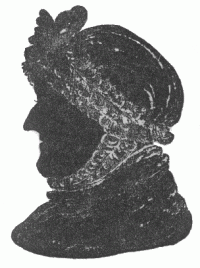
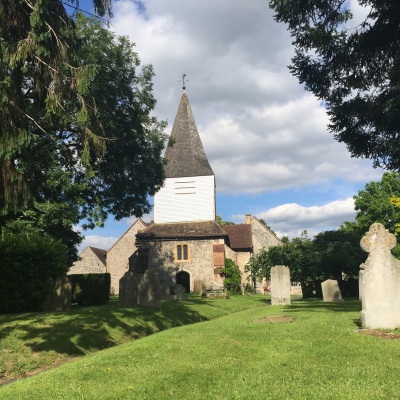
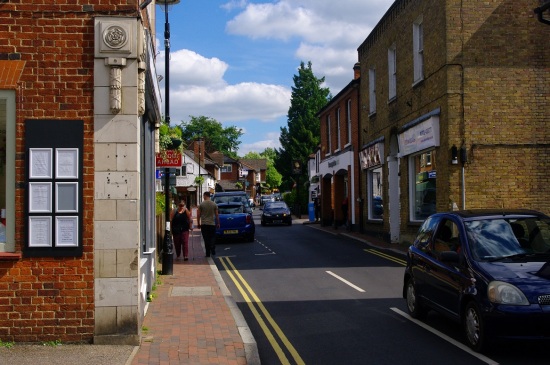
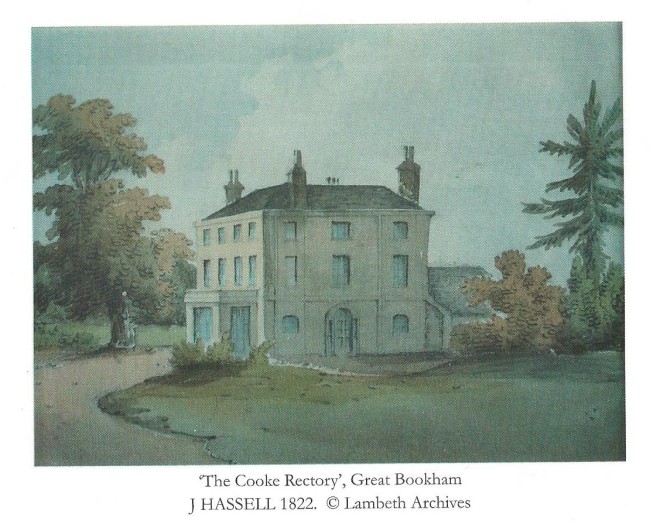

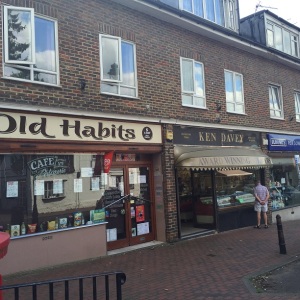
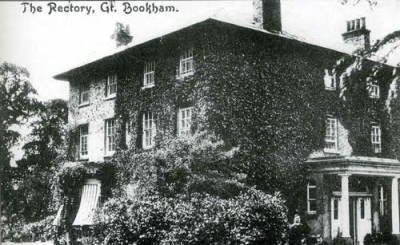
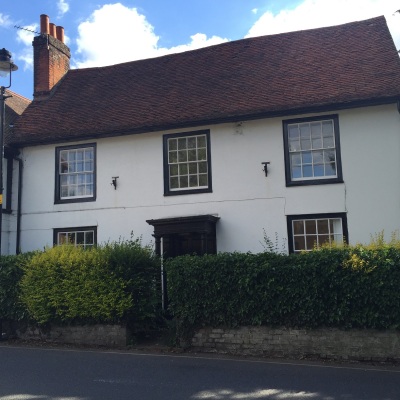
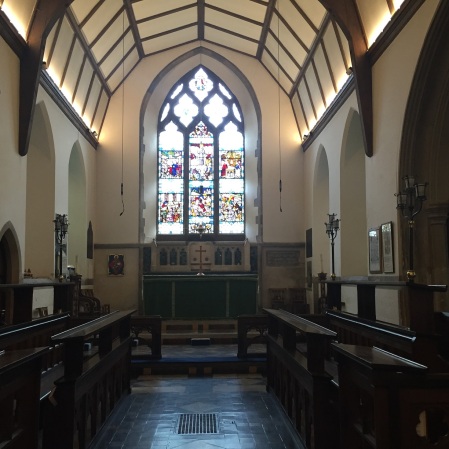
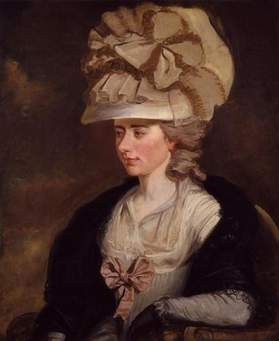
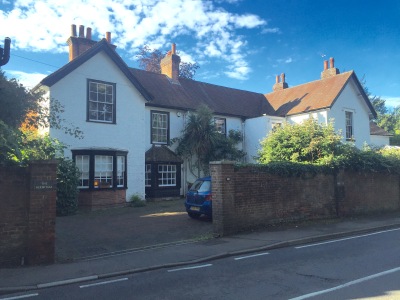
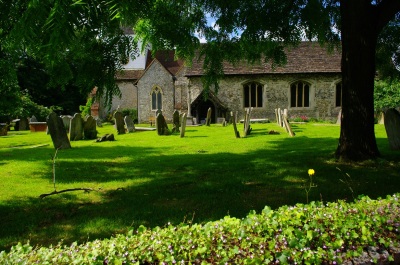


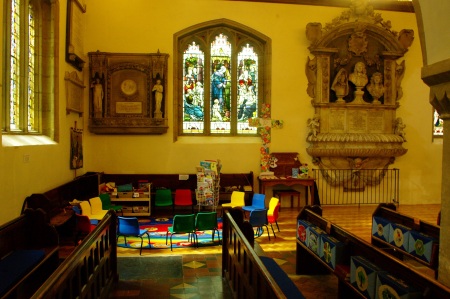
Reblogged this on Lenora's Culture Center and Foray into History.
LikeLike
Thank you Lenora for the reblog!
LikeLike
Thank you for re-blogging my post. Tony
LikeLike
Pingback: Q&A with Dr. Jessica A. Volz, author of Visuality in the Novels of Austen, Radcliffe, Edgeworth and Burney | Jane Austen's World
Pingback: JANE AUSTEN’S SURREY: The Novels as Inspiration by Tony Grant | Jane Austen's World
This was so insightful and special to me. I’ve been a fan of Jane Austen my entire life and have only just learned that my old flat (right above the cafe in the row of shops in Great Bookham) was in the exact same place the rectory used to be. Can hardly believe that I’ve lived and existed in exactly the same spot of land as her. Cue fangirling!
LikeLike
Pingback: Visiting Great Bookham: Church of St Nicolas (and, Box Hill) | Jane Austen's World